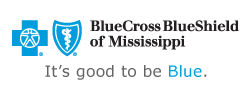Shake the Salt
When it comes to sodium, a little is all you need. However, 90 percent of us eat too much sodium each day. Often it’s not the salt shaker that’s the culprit, but the sodium already in food that adds up.
The U.S. dietary guidelines recommend an average of 2,300 mg of salt per day for most people and only 1,500 mg per day for those over the age of 51 or who have certain health conditions. However, the average person consumes about 3,400 milligrams (mg) of sodium each day - before even picking up the salt shaker.
Sodium is essential to bodily functions, helping to maintain the right balance of fluids in the body, transmit nerve impulses and influence muscle reactions. Too much sodium can lead to high blood pressure, a major risk factor for heart disease and stroke. Here are some foods to watch for excess sodium:
- Frozen meals
- Canned vegetables
- Lunch meats
- Snack foods
- Fast food
- Pizza
- Canned soup
You don’t have to give up all of your favorite foods to decrease sodium in your diet. Learn to read nutrition labels carefully and be aware of how much sodium is in each serving of food. Other tips for reducing sodium include:
- Eat more fresh foods like fruits, vegetables and whole grains.
- Use fresh fish, chicken and lean meat rather than canned or processed versions.
- Use herbs, spices and salt-free seasoning blends when cooking.
- Rinse canned foods like beans and vegetables to remove excess sodium.
- Look for “lower sodium” and “no salt added” options.
For more information on how to eat a low-sodium diet, the DASH (Dietary Approaches to Stop Hypertension) diet is recommended by physicians and many other health associations. The National Heart, Lung, & Blood Institute also has helpful information for reducing sodium, shopping smart, and reading the food label.
Sodium is an acquired taste just like many other seasonings and flavors. Once you begin using less salt, some foods may taste bland. After a few weeks, your palate will adjust and your taste buds will allow you to enjoy natural flavors that excessive amounts of sodium once concealed.
Don't understand the health claims?
Here's a cheat sheet:
-
Sodium-free: Less than 5 milligrams of sodium per serving
-
Very low-sodium: 35 milligrams or less per serving
-
Low-sodium: Less than 140 milligrams per serving
-
Reduced sodium: Sodium level reduced by 25%
-
Unsalted, no salt added, or without added salt: Made without the salt that's normally used, but still contains the sodium that's a natural part of the food itself.




 Women's Health
Women's Health Eat Healthy
Eat Healthy Exercise
Exercise Health & Wellness Articles
Health & Wellness Articles